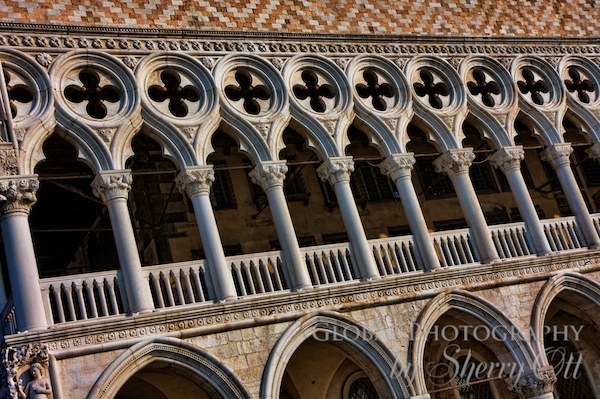
Put the word “secret” in front of anything and you’ll get people’s attention. It congers up thoughts of voyeurism, hushed tones, sneaking around, mafia, politics, and religion. Putting the words “Doge’s Palace” behind it creates even more allure…that is if you know what the Doge’s Palace is.
If you’ve set foot in Venice, then you’ve probably heard of the Doge’s Palace – but like me you may not have known what it is. I had been to Venice previously and even though I had heard of the landmark, I didn’t really know what it was about. In fact, all I really knew about Venice was gondolas and canals so on this trip I was determined to learn more. The words “Secret Passages of Doge’s Palace” had me hooked and I signed up for the Walks of Italy VIP tour hoping to learn about the secrets of Venice as well as what in the world the Doge’s Palace was.

Giuseppina, our guide, met us at San Marco square and walked us to the Bridge of Sighs explaining what we should expect on this secret tour. As Giuseppina dished out information I quickly realized this secret Doge’s Palace wasn’t as much about prisons, questionable practices, or horrible torture as I had originally thought, but instead it was about politics.
The Doge’s Palace was basically similar to the White House, it was the home to the Doge (Governor/Mayor) of Venice. The Doge was elected by the people and held office for a lifetime. There were many people the Doge worked with such as advisors and the Senators that (supposedly) ensured that no one group could have all the power. Sound familiar? Much of the American democratic system is modeled after Venice.
Ancient Venice was all about Silk Road trade, politics, and justice. The Doges Palace was not only a place for the Doge to live, but behind the walls of the palace is where law and justice were determined. Justice was swift at the Doge’s palace and ranged from prison terms to be-headings, to simply disappearing. One can see ‘mail slots’/masks around the outside of the building in the shape of lion’s mouths marked Per Denontie Segrete (“For Secret Denunciations”) for those who wished to call attention to individuals stealing from the state or otherwise violating the law. If you lived in Venice in those days, you had to be wary of anyone since your neighbor or ‘friend’ could place your name on a slip of paper and into the lion’s mouth. Death sentences were without appeal, and their proceedings were all done in the secret passages of the Palace.

We entered the palace and walked up the ornate golden staircase into the formal rooms lavishly decorated to demonstrate the great wealth Venice possessed. We walked through the massive committee, tribunal, and senate rooms as well as the large ballroom – each room looking more regal than the next. The high ceilings and lifelike paintings swallowed me and made me feel small. But if you concentrated and looked closely past all of the gold and ornamentation you’ll see it, a little door. This is where the secrets began.
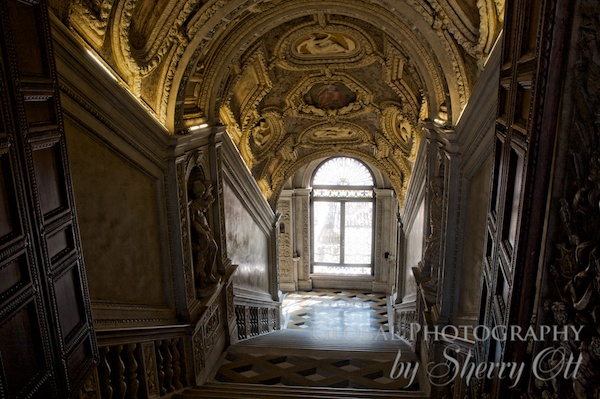
Giuseppina and a palace docent led us through the secret door and our whole world changed. Gone were the gold walls, high ceilings, and paintings – we were surrounded by wood floors, with low wooden ceilings, and very few windows. (no pictures allowed in this part of the palace…so I guess it will remain a secret) The furnishings were sparse and the dimly lit room was cold. The previous rooms were for the public, but these passageways were not open to the public as this is where all of the secret work of the Venice Empire took place.
The Chancellor was the ruler of this part of the Palace and he dished out sentences and torture upon the accused. We walked through the Chancellor’s office, which was quite small considering the power the man had. But it was in alignment with the rest of the secret rooms – dark, wooden, and very little natural light. We learned about the various forms of physical and mental torture applied and the types of sentencing that could occur.
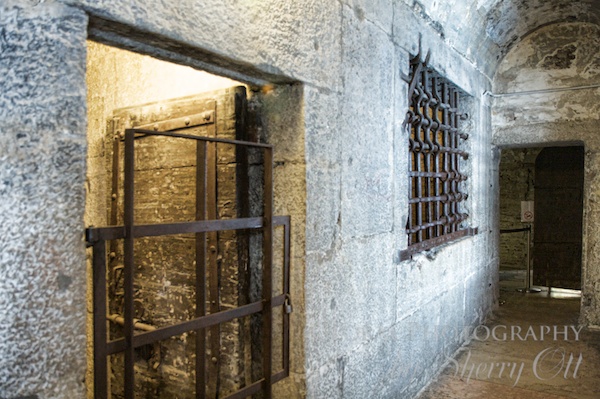
Upon sentencing the condemned would be sent to a prison. The prisoner’s last bit of freedom was their walk over the bridge connecting the palace with the prison across the canal. The bridge had a couple of little windows where the prisoners could look out and see their family before heading into confinement. It was said that you could hear the prisoner’s sighs on their way to prison – hence the name Bridge of Sighs.
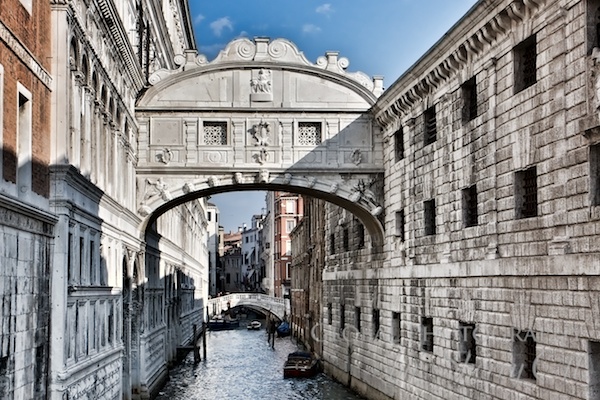
Giuseppina took us to the cell of the famous Casanova and explained how he escaped this seemingly impenetrable fortress. We also saw how the fortress was built as we examined the inventive architecture from viewpoint of the attic. During this whole time we never saw another person or tour group – it felt as if we were the only ones there.
As secretly as we went in, we popped back out another little door into the world of wealth and privilege – engulfed in the sea of tourists looking upwards at the frescoes. It felt like the Chancellor’s office and rooms were but a dream as they were so different and only a wall separated the two worlds.
A Doge’s Palace visit wouldn’t be complete without an inside view of the Bridge of Sighs. We walked over the Bridge of Sighs to the prison; my body felt heavy as I thought about what it may feel like hundreds of years ago to make this journey.
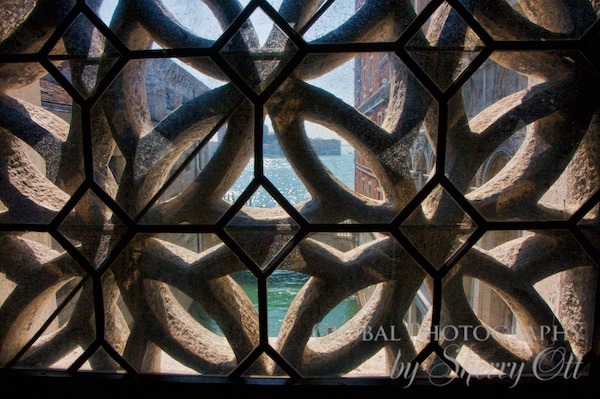
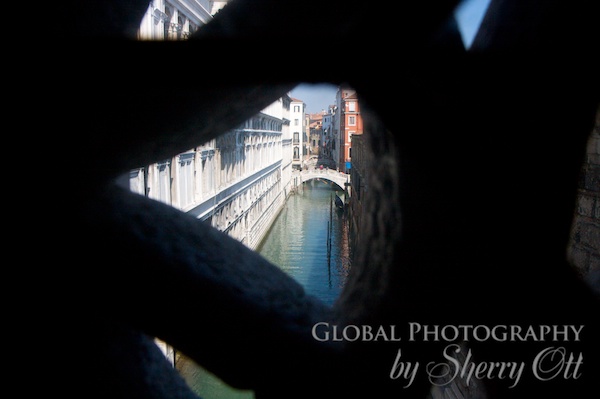
We were able to see all parts of the Doge’s palace, inside and out and I was enthralled with learning about Venice’s role in the world of trading, finance, and justice; as well as it’s secret life which few people get to see.
Disclosure: Walks of Italy hosted my Secret Passageways Tour in Venice. However, all of the opinions expressed here are my own – as you know how I love to speak my mind!

Sherry Ott is a refugee from corporate IT who is now a long term traveler, blogger, and photographer. She’s a co-founder of Briefcasetobackpack.com, a website offering career break travel inspiration and advice.
Additionally, she runs an around the world travel blog writing about her travel and expat adventures at Ottsworld.com.com.








